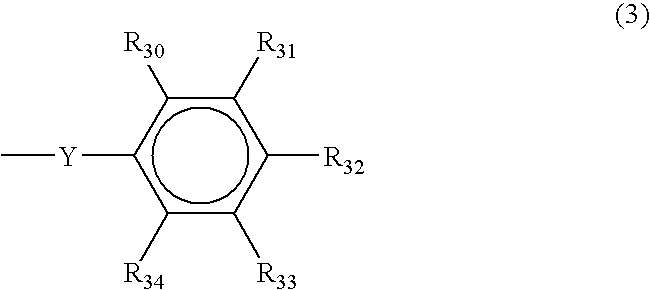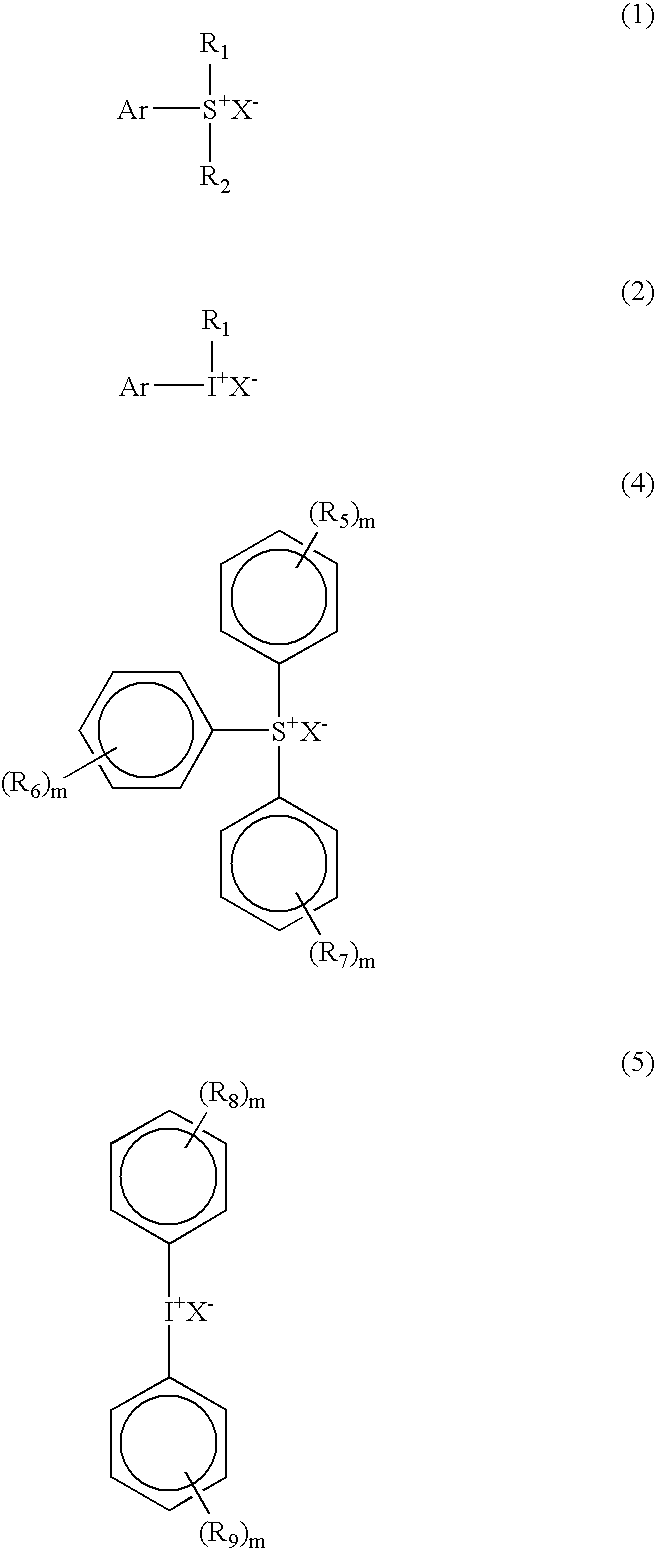Photoresist composition for deep ultraviolet lithography comprising a mixture of photoactive compounds
- Summary
- Abstract
- Description
- Claims
- Application Information
AI Technical Summary
Benefits of technology
Problems solved by technology
Method used
Image
Examples
example 1
4-methoxyphenyl dimethyl sulfonium triflate
[0116]To a 500 ml round bottomed flask equipped with a thermometer, a mechanical stirrer, and a condenser, 1-methoxy-4-(methylthio) benzene (25 g, 0.162 mole), silver triflate (42.2 g, 0.164 mole) and 300 g tetrahydrofuran (THF) were added. The mixture was heated at 40° C. to dissolve all the solids. A clear solution was cooled to room temperature and iodomethane (23.5 g, 0.166 mole) was added dropwise from a dropping funnel. The precipitate formed immediately during the addition of iodomethane. An exotherm was observed and the temperature rose to 55° C. The reaction mixture was stirred for 4 hours and the precipitate was filtered out. The solution was dark and the THF was reduced under vacuum. The solution was added drop wise to one liter of ether. The precipitate was dissolved in dichloromethane (200 ml) and filtered to remove silver oxide. The filtrate was drowned in ether (1 liter) and the white precipitate was filtered and dried under ...
example 2
4-Hydroxy-3,5-dimethyl phenyl dimethyl sulfonium chloride
[0117]61 g of dimethylphenol (0.5 mole), 39 g (0.5 mole) of dimethylsulfoxide (DMSO), and 400 ml of methanol were placed in a 1 liter round bottom flask equipped with a thermometer and a condenser. The mixture was cooled in a liquid nitrogen-isopropyl alcohol bath while hydrogen chloride gas was bubbled in at 10° C. for 6 hours. A precipitate was formed and a part of the methanol was removed by rotavap. The crystals were filtered and washed with ether several times. The solid product gave the following analytical results 1H NMR(Acetone-d6), 2.34 (s, 6H, 2CH3); 3.23 (s, 6H, 2CH3); 7.80 (s, 2H, aromatic).
example 3
4-Hydroxy-3,5-dimethyl phenyl dimethyl sulfonium triflate
[0118]2.185 g of 4-Hydroxy-3,5-dimethyl phenyl dimethyl sulfonium chloride were placed in a flask and 10 g of water were added, followed by 2.56 g of silver trifluoro methane sulfonate in acetone. A precipitate of AgCl formed immediately. The mixture was stirred for 30 minutes and the precipitate was filtered off. The solution was extracted with dichloromethane, dried over sodium sulphate and filtered. The solution was drowned into ether and a precipitate formed which was filtered and dried in the vacuum dryer at less than 40° C. The solid product gave the following analytical results: 1H NMR(Acetone-d6), 2.40 (s, 6H, 2CH3); 3.10 (s, 6H, 2CH3); 7.65 (s, 2H, aromatic).
PUM
| Property | Measurement | Unit |
|---|---|---|
| Wavelength | aaaaa | aaaaa |
| Molar ratio | aaaaa | aaaaa |
| Wavelength | aaaaa | aaaaa |
Abstract
Description
Claims
Application Information
 Login to View More
Login to View More - R&D
- Intellectual Property
- Life Sciences
- Materials
- Tech Scout
- Unparalleled Data Quality
- Higher Quality Content
- 60% Fewer Hallucinations
Browse by: Latest US Patents, China's latest patents, Technical Efficacy Thesaurus, Application Domain, Technology Topic, Popular Technical Reports.
© 2025 PatSnap. All rights reserved.Legal|Privacy policy|Modern Slavery Act Transparency Statement|Sitemap|About US| Contact US: help@patsnap.com



